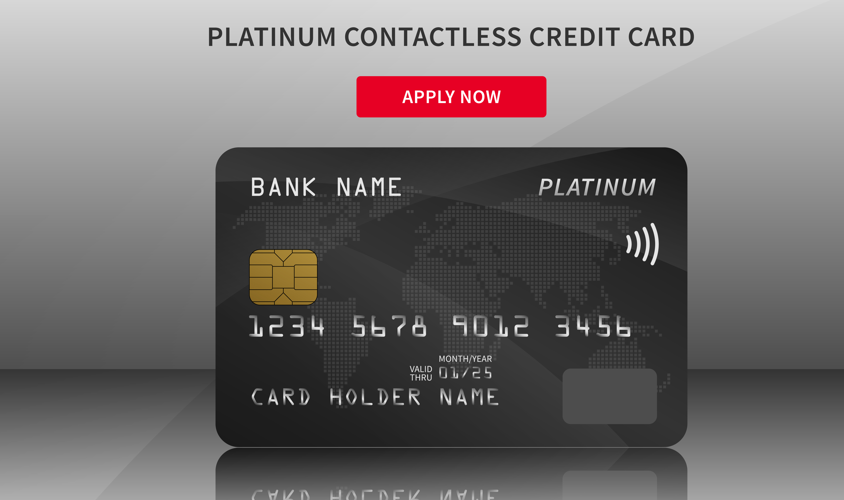customer loyalty schemes may be the solution for driving cardholder
spending and acquisition. However, the cost involved for card
issuers remains a hurdle. William Cain and Truong
Mellor report.
increasingly competitive due to the sheer number of products being
launched, players have turned to loyalty programmes in order to
uplift customer acquisition and retention numbers. One of the key
challenges is for issuers to effectively utilise loyalty schemes to
differentiate themselves in the marketplace. Another challenge is
to ensure that a loyalty scheme providing sufficient return on
investment.
similar, so it is crucial for card issuers to maintain a loyalty
and rewards scheme that is appealing for its customers. However, it
is unclear whether these types of programmes can be said to be a
competitive differentiator any longer. According to Aneace Haddad,
chairman and founder of France-based loyalty scheme and smart
payments provider Welcome Real-Time, the focus is increasingly on
making incremental changes and improvements to loyalty programmes
to make them more attractive. He cites examples of banks moving
away from air miles as they are expensive to provide, and
encouraging customers to convert their air miles for benefits at
department stores and other retailers. A more specific example of
this trend is the move towards instant redemptions at the
POS.
told CI. “Everybody knows they are; they even know the mechanics of
loyalty programmes and how they are funded out of
interchange.”

Reward schemes could be hit
It is this last point that could potentially wreak havoc with such
programmes. While the issue has yet to have any significant effect
on banks – with the notable exception of the Australian market – if
interchange revenue is curtailed by regulators, this could dampen
the ability of banks to provide the type of rewards schemes
currently on offer. While this pressure on loyalty schemes is still
for the most part theoretical, it may completely change the
structure of these programmes, according to Haddad, as they have up
until now been almost entirely funded through interchange
revenue.
or reduced, or if merchants begin steering customers towards lower
interchange products like debit cards or cash, the whole engine for
loyalty programmes gets destroyed,” explains Haddad.
increased collaboration between issuers and merchants might help
solve disputes over interchange, Haddad is less optimistic about
this in light of recent legal developments. Individual banks do not
assume responsibility for interchange fees, so they cannot
effectively create value for interchange.
solutions leader for MasterCard Advisors – Loyalty Solutions
Worldwide, finding the most cost-effective rewards offerings for a
loyalty scheme can vary. “With cashback, you may not have breakage
due to the automatic redemption, so it can be quite expensive and
very transparent for the consumer. Merchant discounts can be
cost-effective but the value to the consumer may not be there. You
may not get the value you want to drive growth. Point-based
programmes have more breakage opportunities and more ability to
have a high perceived value for a customer but with a lower cost on
the back-end to the bank,” she told CI.
cashback offering drives customer loyalty. “I think cashback can be
great as an acquisition play to get people on board,” she explains,
“but once the special offer is over, are people continuing to stick
with the card? Or are they going to jump onto the next big offer
out there in the marketplace?”
different offerings, according to Geraghty. While travel rewards
and cashback-based schemes are popular in the UK, the US market has
seen a trend towards more flexible offerings – a good example being
the Flexible Rewards programme run by JPMorgan Chase, which gives
cardholders the choice between points, retail vouchers, travel
options and cashback. “A lot of the larger global players are more
trying to be more flexible in their approach and offering a little
bit of everything to everybody,” she adds.
for card issuers, it would be unsurprising to see them begin to cut
back on their loyalty offerings; however, so far any overall
scaling back has been minimal, as the competitive nature of the
market makes it a risky proposition, but cost management is a key
issue.
their loyalty programmes,” says Haddad. “We may see less and less
of the ‘teaser’ incentives like 5 percent cashback, because it’s
hard to fund that.”
seen a more concerted focus on loyalty schemes from European banks,
both to differentiate themselves and to drive the transaction
levels up. “We are seeing a huge amount of interest in how issuers
can utilise loyalty and drive their growth objectives,” she said.
Naturally, Geraghty has also seen current programme managers look
to drive increased value on their existing loyalty and rewards
schemes.
woes is for cards issuers to work more in conjunction with retail
merchants, with an eye to passing more of the cost on to them. This
also creates a better marketing story for the banks to tell their
cardholders, according to Haddad, as they can steer consumers
towards more generous rewards schemes that are directly funded by
the retailers. However, such schemes are difficult to operate
successfully, as it can be a challenge to get more than one
retailer within the same category involved.
promotional marketing schemes that are being adopted by banks and
issuers. “You turn the card around, and you turn it into a
promotional marketing platform for the retailer,” he says. “They’re
not rewards; they’re promotional items to incentivise the customer
to come back more often.”

Success stories
How well do you really know your competitors?
Access the most comprehensive Company Profiles on the market, powered by GlobalData. Save hours of research. Gain competitive edge.

Thank you!
Your download email will arrive shortly
Not ready to buy yet? Download a free sample
We are confident about the unique quality of our Company Profiles. However, we want you to make the most beneficial decision for your business, so we offer a free sample that you can download by submitting the below form
By GlobalDataOne particular loyalty scheme that is currently garnering a lot of
attention within the industry is the Garanti bonus programme, a
multi-merchant scheme focused on instant rewards through
chip-enabled cards which has played a major role in transforming
Garanti Bank into a leading issuer in the Turkish cards
market.
is that Garanti is both an issuer and an acquirer, so it was able
to use this leverage to drive spending for both the cards and the
merchants. As the benefits for the merchants were clear, they were
more willing to help fund the programme.
Recompensas loyalty programme in Mexico has been another success
that the industry has been keeping a close eye on. “It has been
very successful in driving customer acquisition, retention and
usage,” she explains. A traditional points-based scheme that offers
cardholders a variety of rewards, the Recompensas programme
certainly benefited from being one of the first rewards schemes to
market. As a global player in the rewards space, Santander has done
a good job catering to different markets and segments within its
customer base, which is crucial for an effective campaign.
Credit vs debit schemes
According to Geraghty, banks are gradually moving away from purely
credit-based rewards programmes to schemes that reward the customer
for their entire banking relationship. “They have the opportunity
to be rewarded for all the banking products that they hold with the
institution,” she explains. “We are seeing a lot of interest in
that, particularly in the US, where programmes such as this have
already been launched.”
in the US offer such rewards schemes, and Geraghty sees many more
being launched in the near future. With the European cards market
being particularly debit-based, Geraghty sees these ‘relationship
rewards’ programmes as a potential growth area for the
market.







